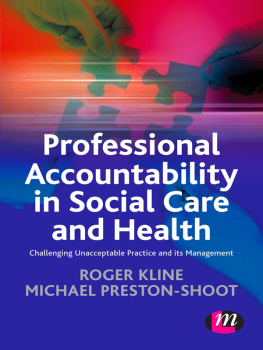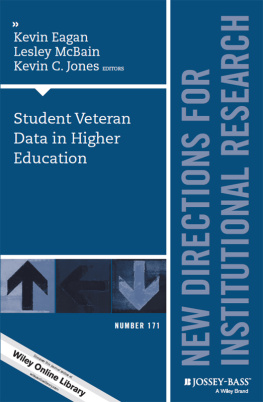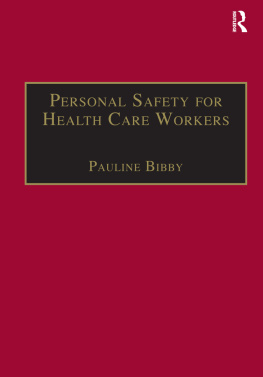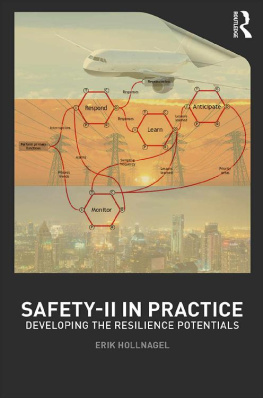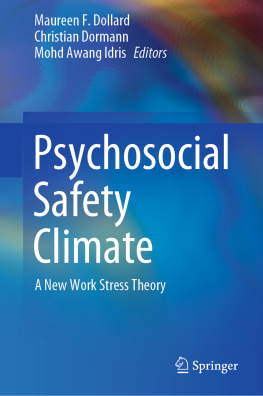CHAPTER 1
Introduction to Challenges for Health and Safety in Research
O. KUZMINA*
a Imperial College London, South Kensington Campus, SW7 2AZ, UK, *E-mail:
Post COVID19 Note
This is the first time I have been involved with writing and helping to produce a book. All was going well; chapter drafts were being sent to us by the various authors and we enjoyed reading about experiences and the challenges faced in our sector (we hope you do too!). Our day-to-day work was busy and my team were focused on providing great advice and support to our academic colleagues. We were preparing for various challenges and reviewing how we could improve and provide staff and students with skills to apply principles of risk assessment to their work. Then on 18th March our university was effectively closed, and all work was stopped due to COVID19.
The effect of this was acute labs having to be safely shut down in a very short period of time, and stressful for all involved due to the logistics of being able to achieve this while also thinking about the potential impact on work, life, family and our future.
It is June 5th and in the UK the lockdown is being eased. Olga and I must admit that for the last few months this chapter has been left to gather dust while we worked remotely to support our Departments in their decision making, and provided advice on assessments for work on COVID19 related projects. For the last two weeks I have returned to our campuses in London to help with planning for the gradual reintroduction of staff and students into our buildings and for work to start again in this new normal.
Many of the chapters in this book have been written and completed before the COVID19 crisis, however I think the experiences are still relevant to practitioners in our sector and beyond, even with the introduction of social distancing and other COVID19 controls. The COVID19 work requirements will require us as a profession to adapt and be even more innovative in our approaches. We don't believe that higher education, and in fact most workplaces, will be able to return to pre COVID19 working for a while yet. Looking through the chapter titles our authors have provided, you can see that the challenges to operating successfully with social distancing and other strategies to reduce infection will require significant thought and planning. Therefore, we think we can confidently say that a revised edition of this book will contain reflections by our returning authors (and new ones) on how they and their workplaces adapted to COVID19 and how it influenced their approaches.
Crucially I would say that in my experience so far during this crisis, the work done by technical staff, admin support and estates to get buildings and procedures ready for a phased return of researchers has been magnificent. Academic leadership from our Departments and Faculty has been excellent, and we have all pulled together to provide support to each other and direction through these difficult times. We are on the cusp of having the first few researchers return to work on the 8th June, with more returning over the coming weeks. Currently the plan for our Departments is to achieve up to 25% occupancy of research buildings using cohort models or similar that allow lab-based researchers within a department to complete their lab work while remaining socially distant. Where this is not possible, other control measures must be used. Departments have COVID19 oversight management teams to receive feedback from the researchers to ensure procedures reflect their needs. My team have produced return to work induction materials delivered via online learning platforms to ensure researchers are reassured that buildings are safe to return to, and to provide information on the new procedures for them and their colleagues to work safely. Face-to-face inductions and training are moving online which creates additional challenges. The next large piece of work for us is to support our colleagues in teaching to plan for lab practicals for returning students in October.
All areas of health and safety described in this book will be impacted by the reaction to the COVID19 crisis, those of us in health and safety operations are in a unique position to provide advice and support to many operational areas. The changes to our working practices and behaviours will be profound, but we hope that it will lead to improved communication and trust between health and safety advisers, academics and students. Then, no matter what the conditions, we will achieve a safe working environment and a healthy balance between work and home.
1.1 Introduction
Research laboratories provide a unique environment of continually evolving work, varying levels of individual competence and increasingly shared workspaces between different projects and research groups. Health and safety management in research laboratories faces unique challenges to ensure that science and knowledge is advanced without being a barrier to scientific progress. Health and safety, rather than being a barrier, needs to be an enabler to these aims in these dynamic and challenging environments.
A recent review and critique of academic lab safety It is interesting to note the differences seven years on and reflect on why these have occurred and, most importantly, what can be improved to support researchers and enable safe scientific progress.
What are the challenges that modern researchers face and how do these impact on safety culture and the implementation of a safety management system? Various barriers have been identified or conjectured in previous studies. The shift in focus from theory, reflection and evolution of ideas to milestones, defined end points and real-world applications with monetary value has significantly changed the economic landscape at many universities. Academic and research careers are hard to achieve and maintain, with pressure from internal reviews, funding bodies, politicians, the public and business to ensure continual progress and value for money. Obtaining funding to do research is extremely competitive, even at the most prestigious institutions. Time is critical to ensuring work that is funded is then completed on time and within budget. Key stakeholders are the organisations hosting the research. They must ensure that their estates and infrastructure can keep pace with technical requirements, the need for flexible lab spaces and deliver a modern comfortable environment for study and work. The need for a physical space to be able to accommodate diverse research activities while achieving the lowest impact on the environment has never been greater, more challenging and expensive.
These factors have an impact on end user health and safety operations in various ways. From the need to take a shortcut due to time pressure to meet a milestone, install an item of equipment in a less than optimal lab environment with insufficient cooling or extraction, to working in an overcrowded lab space. From the lab bench it can appear that the organisation or university is not managing its space with their scientific requirements or health and safety in mind, potentially leading to a poor relationship between researchers and central services and poor safety culture. A recent review of what researchers think of the culture they work in by The Wellcome Trust indicated that their working culture is best when it is collaborative, inclusive, supportive and creative, when researchers are given time to focus on their research priorities, when leadership is transparent and open, and when individuals have a sense of safety and security. But too often research culture is not at its best.
It is critical that health and safety in a research lab environment is practicable to those working in the labs and those that support the researchers (technicians, estates staff and contractors). Over the last 20 years there has been a definite shift of approach in health and safety from prescriptive top-down management to a consultative approach to facilitate this.
Next page

